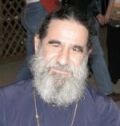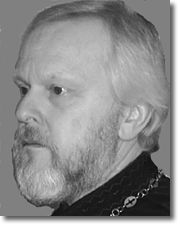|
From 'Orthodoxy and the World' www.pravmir.com Liturgical Life
Christmas carols have a deep connection to the Feast of the Nativity of the Lord in western countries, but today one can meet different attitudes toward them among clergy. There are parishes where a priest refuses to use them during or after the Nativity service, and there are priests who allow them during the service as a part of western culture. Is there a place or not for Christmas carols in Orthodox churches? This question we asked several priest. At a time when Christianity is under attack in most countries in the West, we need to consider what tools, cultural and spiritual, are available to us for the strengthening of our faithful. There are parishes that have a strong tradition of using the Christmas carols and we should not to stop them, if that is helping to touch hearts and win souls. Of course, one should choose from among the carols the ones which are biblical, spiritual and theological. I do not believe, however, that any of these carols should be sung during the Liturgical Services or replace the hymns assigned by the Typikon of the Church, but they can be sung after the dismissal of the Liturgy where such demand is made by the faithful. I also do not believe that it is necessary to introduce the Christmas carols in a parish where there is no such tradition of using them and there is no demand from the congregation. The parish pastor should exercise discernment with a prayerful heart and mind before making any changes either in favor or against using Christmas carols in his parish.
For Orthodox Christians in the western world, Christmas can create something of an identity crisis. While it is difficult enough to extricate a personal schedule from multiple pilgrimages to the shopping mall (a distinctly un-Christian aspect of modern Christmas), it is sometimes far more difficult to know what to make of Christmas carols and songs, and their appropriate place in the life of an Orthodox Christian.
Apart from the Resurrection, this is the single greatest event in human history, and it gives us our very identity as Christians Ė and identity which solves any identity crisis we might ever face in our lives. We should celebrate it at every opportunity.
The question has been raised as to whether Christmas Carols or indeed, other metrical hymns from the Western traditions, might be used during services in the Orthodox Church. In answering this, I should like to start with my own congregation in Dorset, England. The question, in fact, has never been raised among us. Very few of our regular congregation have actually come to Orthodox Christianity from heterodox churches, most having been brought up in Orthodox countries or, at least, an Orthodox culture. However, with an eye to our future mission, we are certainly aiming to bring home Western Christians, back to their spiritual roots. In other contexts I have heard the idea discussed that the use of the familiar might be a worthy tactic to assist, (perhaps only for as long as necessary) the cultural transition between rites.
Let us establish from the start that borrowing has often been a feature of liturgical development. Liturgical scholars have, for example, noted the influence of the fourth century liturgy of Jerusalem on the structure of the Holy Week rites, both East and West; Antiochene Rite played a similar role, shaping many of the ceremonies still observed throughout the Byzantine Rite for the same period up to Pascha. Sharing has always been done but, usually, the local religious ethos has reshaped the forms. If, however, we look at the history of Christmas carols in Western Christianity, we can observe that, in fact, they were para-liturgical, that is, used outside the main services, usually as part of a continuing folk celebration of the particular feast.
The point here is that the Roman rite, like the Byzantine, had no provision for optional hymns as such; it had its introits and graduals, sequences and scriptural (usually psalmic) verses, just as we have our Antiphons, Prokeimena, Troparia and Kontakia, Megalanaria etc. Apart from the traditional Latin (often Ambrosian) hymns in the Liturgy of the Hours, there appears to have been no official sanction for metrical hymnody in the Western Eucharist until quite late. I presume that this has come into the modern Roman rite from the influence of Protestantism, where popular hymn singing replaced traditional liturgical texts with more subjective, poetic compositions, designed to appeal to the emotions first of all.
In mediaeval England, popular Christmas carols were sung at Ďparish alesí after the Mass on certain festivals, involving community singing and the drinking of beer. But these were strictly extra-liturgical and an extension into folk culture of the Christian faith. In other words, carol singing was part of the enculturation of Christianity and the overall process of evangelisation.
Whether this can find a place in Orthodox practice is a moot point. The singing of composed hymns, rather than verses from the Scriptures, was controversial in the early centuries of Christianity. Arians composed popular songs and used them to demonstrate their heresy. This was why St. John Chrysostom organised processions, chanting litanies through the streets of Antioch in opposition. The difficulty we have here, though, is that of fitting different cultural forms, oriental and occidental together. It is Time itself, of course, which enculturates, almost hallows, liturgical forms but to make fusions of two different forms must, at best, be awkward. Each rite has its own integrity or genius so that the use of rhyming metre and Western musical forms must appear out of place.
Many Western carols are often perfectly Orthodox, doctrinally, bearing witness to and celebrating the obvious themes of the Nativity. The ancient Latin hymns such as Veni, Redemptor gentium (by St. Ambrose) or A solis ortus cardine (by Caelius Sedulius), are clearly suitable. There is also A Great and Mighty Wonder, which itself is a metrical version from the Greek, originally written by St. Germanus (634-734):
The Word becomes incarnate And yet remain on high! And Cherubim sing anthems To shepherds from the sky.
I would also cite Thomas Pestelís seventeenth century carol:
Behold the great Creator makes Himself a house of clay A robe of virgin flesh he takes Which he will wear for ay.
This theme of the Incarnation is similarly spelled out in Hark the herald angels sing (Charles Wesley 1707-88):
Late in time behold him come Offspring of a Virginís womb! Veiled in flesh the Godhead see, Hailed the incarnate Deity!
My final example is from O Come all ye faithful, originally composed in Latin, (Adeste Fideles 18th Cent.) using ideas from the Nicene Creed:
God of God Light of light, Lo! He abhors not the Virginís womb; Very God, Begotten, not created.
Amongst others which are suitable, would be Of the Fatherís heart begotten (by Prudentius 348-413) or the haunting Coventry Carol with its wonderfully dissonant harmonies, a reflection upon the slaughter of the innocents.
Bearing this in mind, we might regard carols more positively, perhaps where appropriate, finding a place for them in parish life. I would suggest, therefore, that the following principles be observed:
∑ That they be used either at social gatherings or straight after the Liturgy, once ended. ∑ That only liturgically and doctrinally sound carols be used. ∑ That the sentimental, non-doctrinal carols not be used in the church itself. ∑ That if carols were to be used in any liturgical sense at all, they would be better sung after the dismissal, perhaps at the distribution of the Antidoron. ∑ That space, naturally, be made for carols and folk songs from historically Orthodox lands as well.
© Copyright 2004 by 'Orthodoxy and the World' www.pravmir.com |


